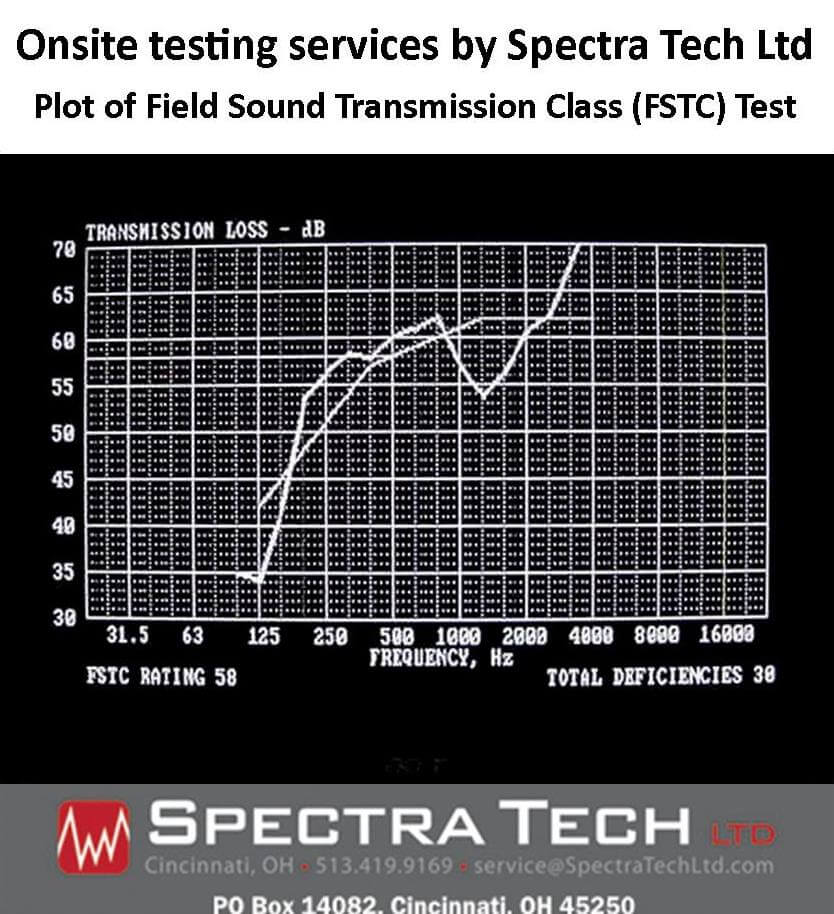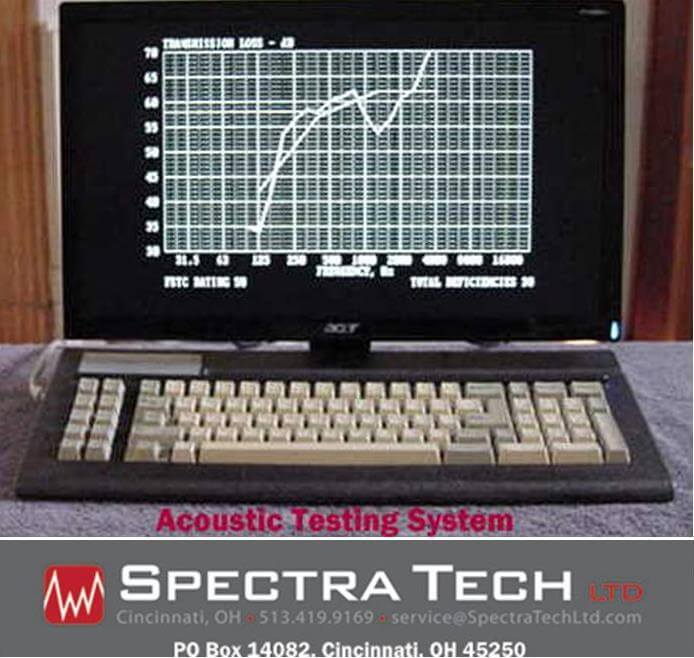Spectra Tech employes sophisticated equipment and software to automatically measure and document Field Ceiling Attenuation Class (FCAC) values of demising interior lay-in ceilings which are installed over partial-height partitions. We can also provide assistance in designing solutions to increase the sound isolation provided by demising construction.
- This is the “field” (F) version of testing normally done by product manufacturers to rate the Ceiling Attenuation Class (CAC) performance of a ceiling product or system when tested in an ideal laboratory setting. CAC performance values are nearly impossible to obtain in the field, due to inherent deficiencies associated with field construction.
- The test measures the attenuation of sound as it passes up through the ceiling construction on the “source” side of the partition, through the plenum space above the ceiling, and back down through the ceiling again on the “receiving” side of the partition.
- The Field Ceiling Attenuation Class (FCAC) Curves were developed to form a universal standard by which the attenuation provided by various ceiling materials and design configurations could be quantified.
- To test the transmission of sound through a particular construction, a broadband spectrum of noise is generated at all frequencies between 63 Hz and 8,000 Hz and amplified to provide a level at the receiving side that is sufficiently higher than the room’s normal ambient noise level.
- The average unweighted (fast response) sound levels for each octave frequency band between 125 Hz and 4,000 Hz (4KHz) is recorded at ten random locations on the “source side” of the partition construction for a period of 10 seconds or more.
Then, the average unweighted (fast response) sound levels for each octave frequency band between 125 Hz and 4,000 Hz (4KHz) is recorded at ten random locations on the “receiving side” of the partition construction for a period of 10 seconds or more. - A reverberation time test is also conducted in the “receiving room” and if the room reverberation is not found to be within the nornal criteria, adjustments to the CAC rating must be made accordingly.
- The test results are plotted over a family of reference curves, and computations are made to allow for a maximum of 8 dB of deficiencies in any octave band or up to a total of 32 dB of deficiencies in all octave bands combined. The corresponding value of the plot at 500 Hz is the FCAC value.
- Plot / Print Test Results: We can provide documentation of test results by plotting / printing the test values on paper, and / or provide the reslts in PDF format.
For a comprehensive list of acoustical measurement variables and criteria that can be measured and / or computed, please visit Detailed Measurement Specifications & Definitions
For specifications on our primary audio test equipment, please visit Audio Test System Specifications



